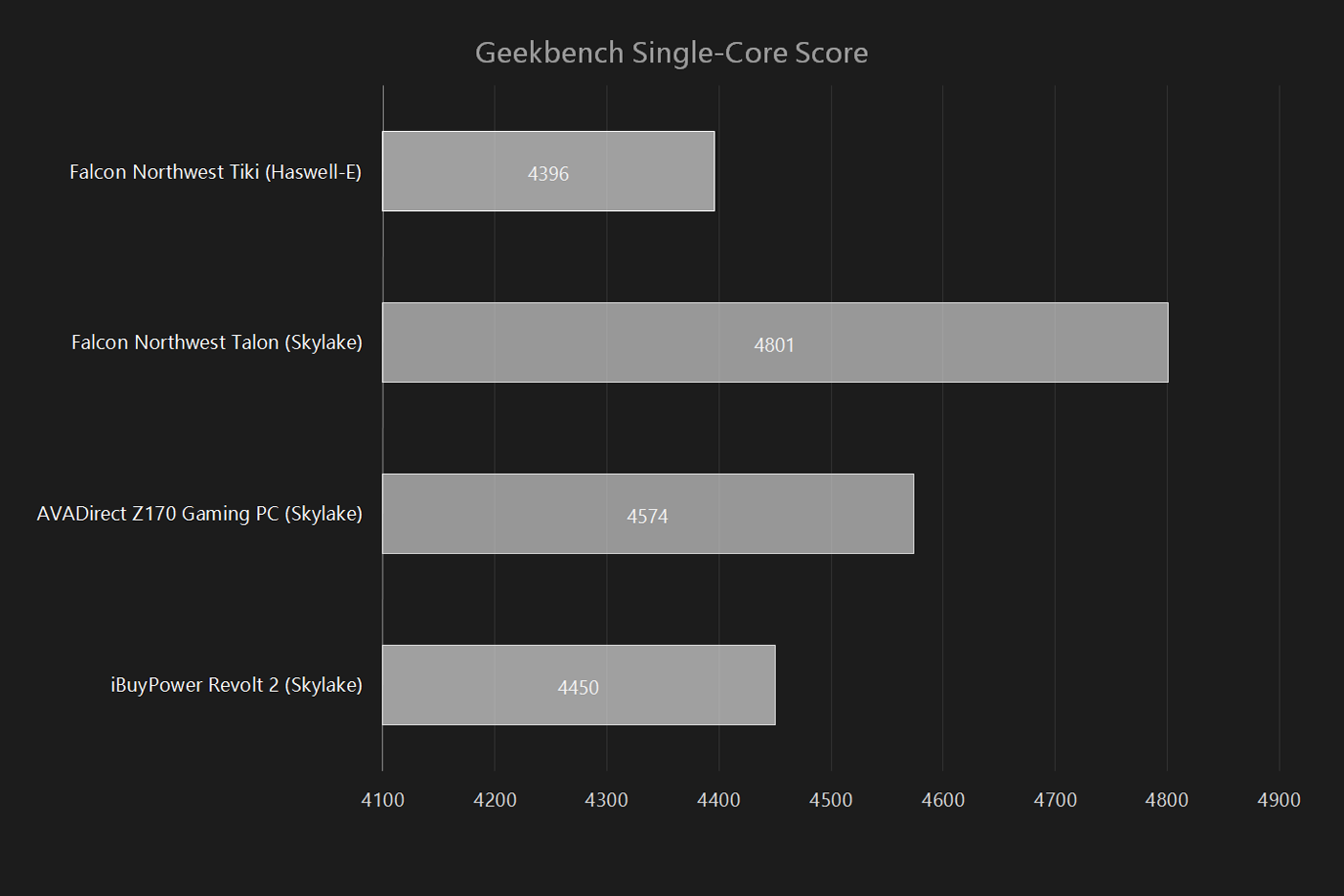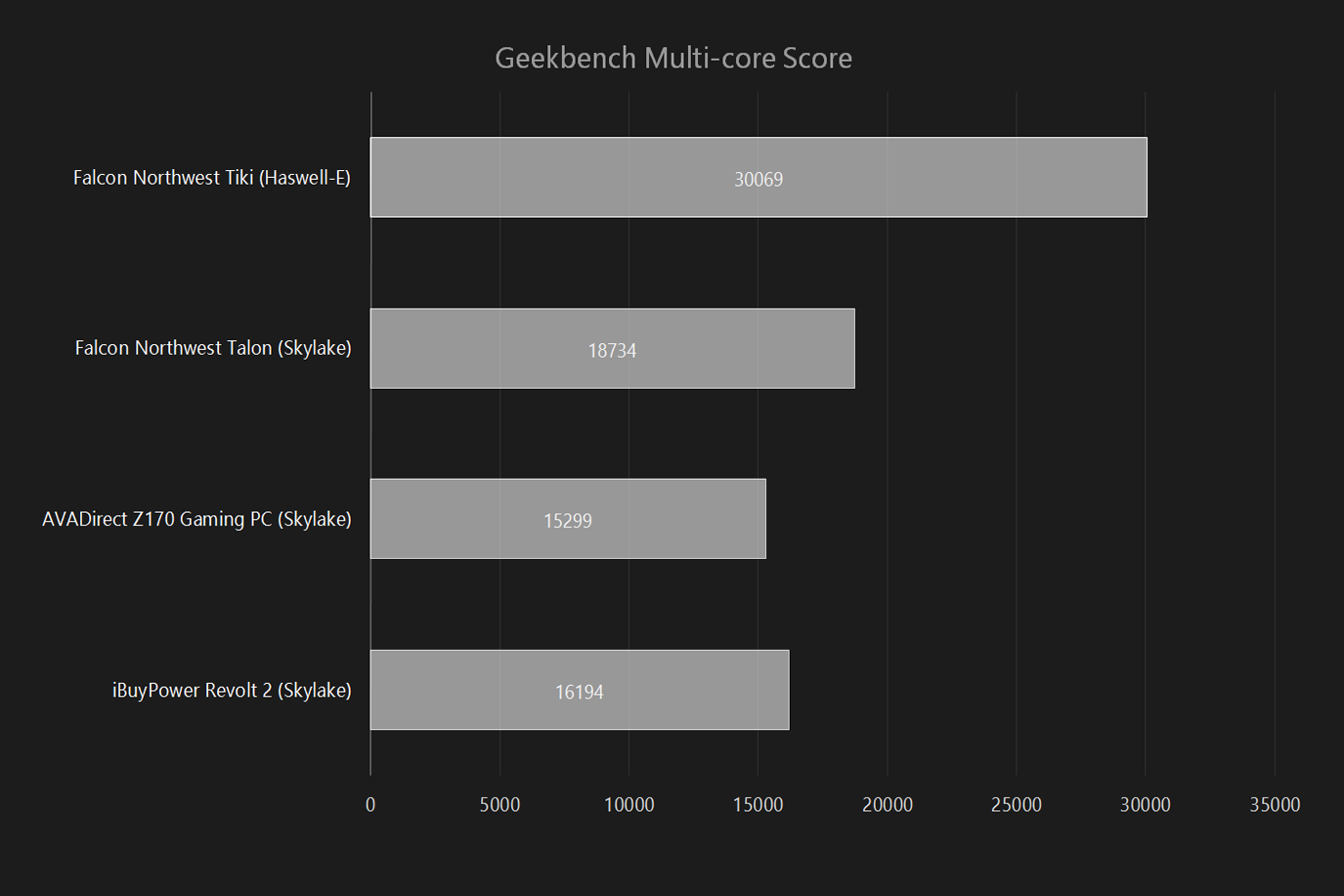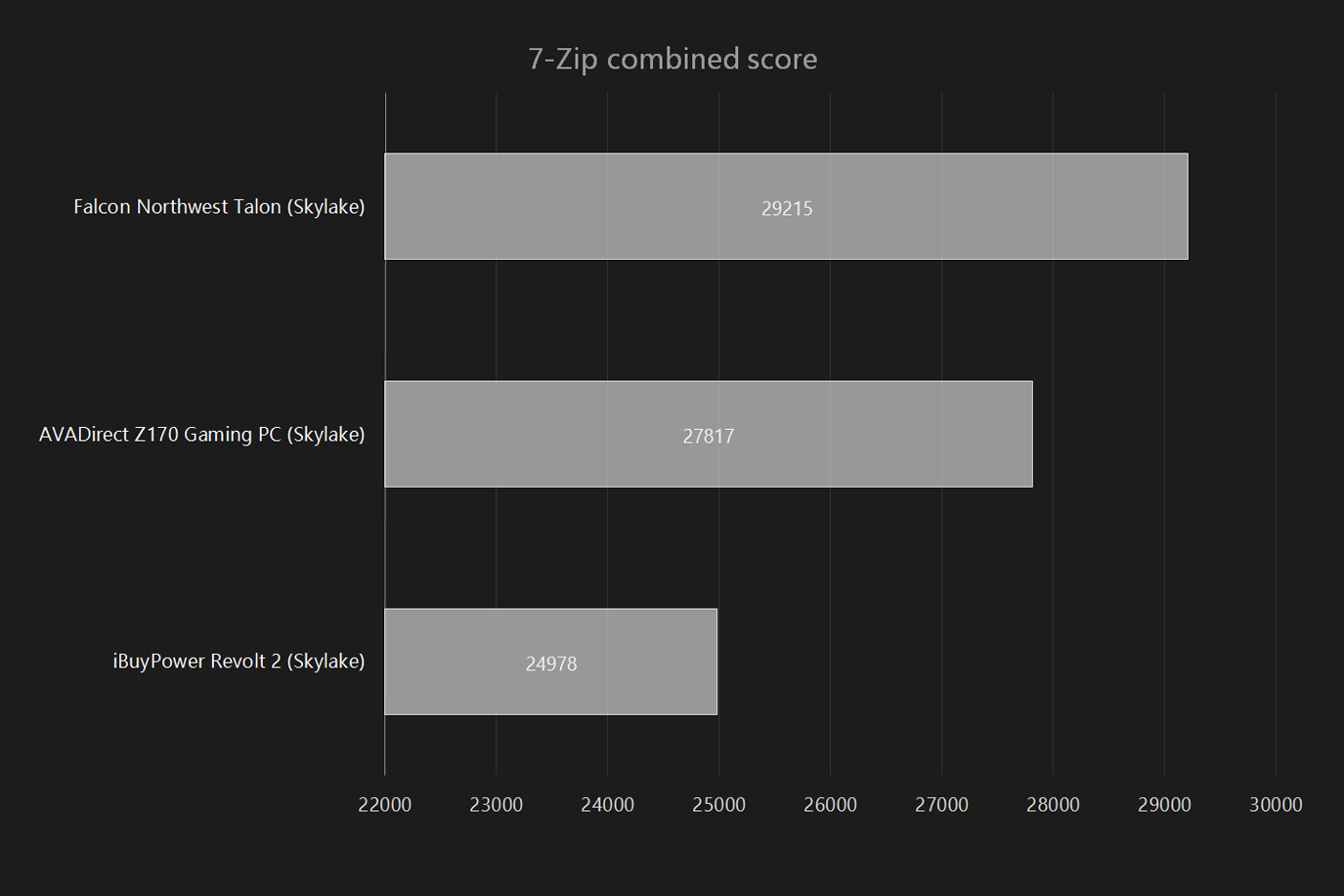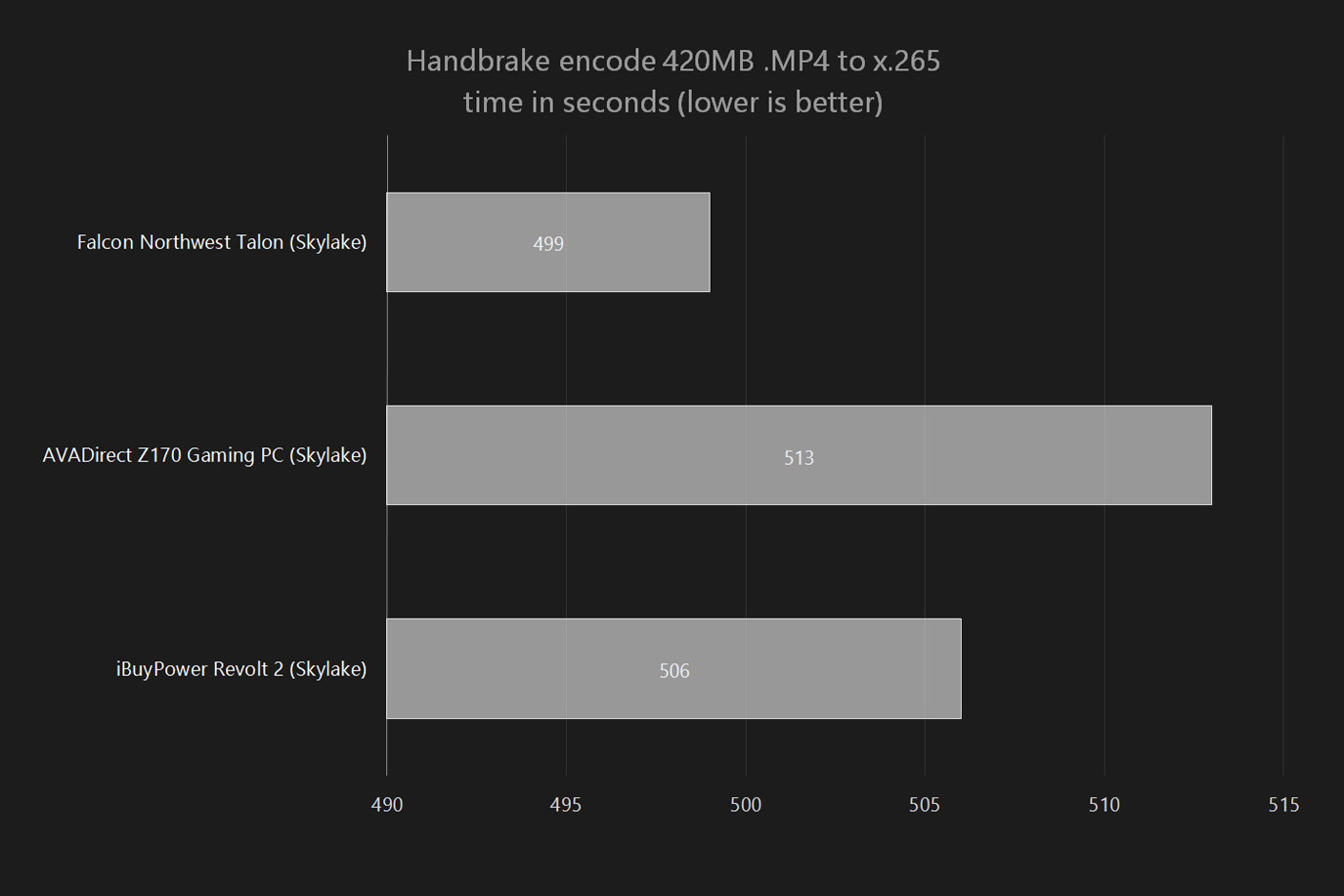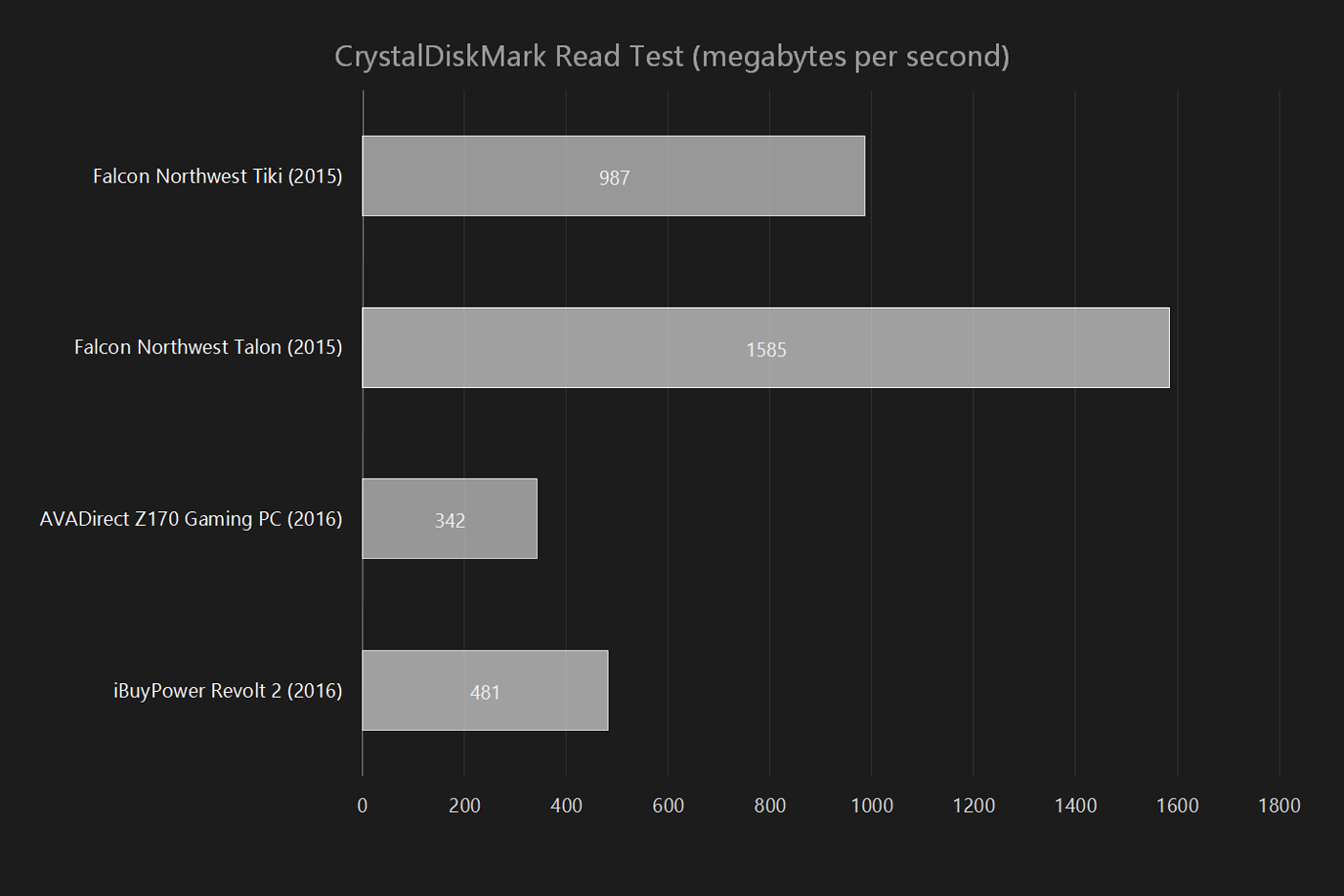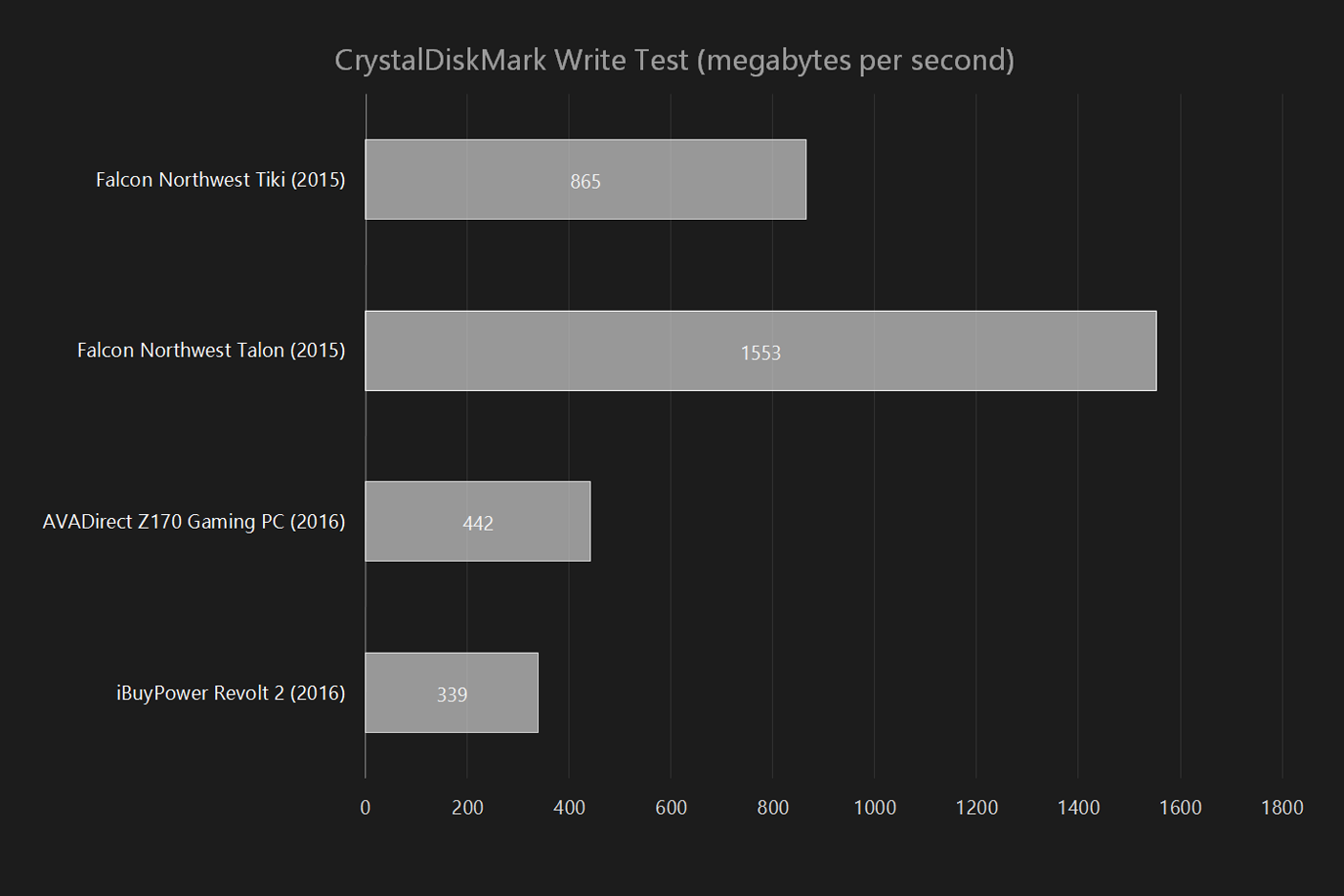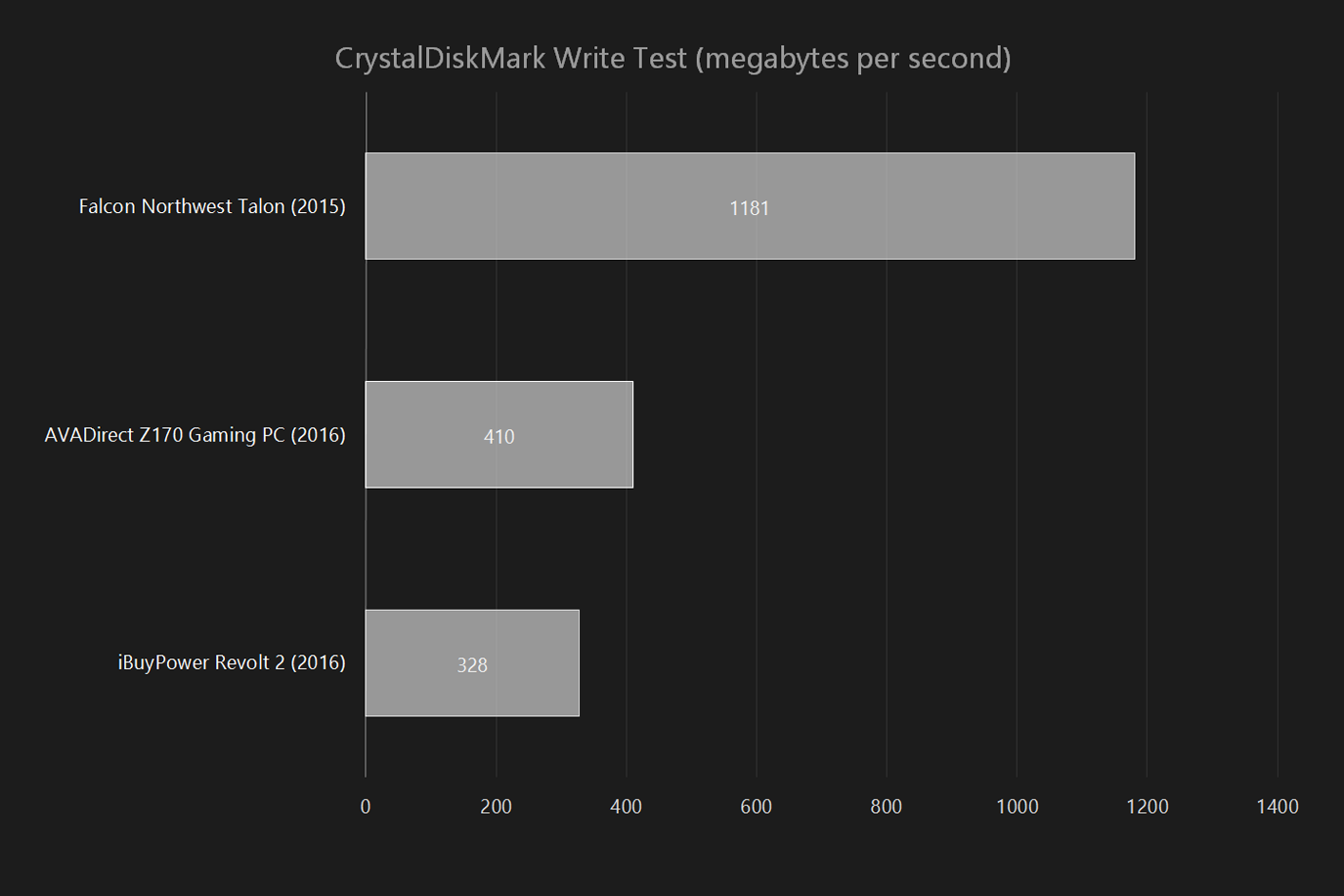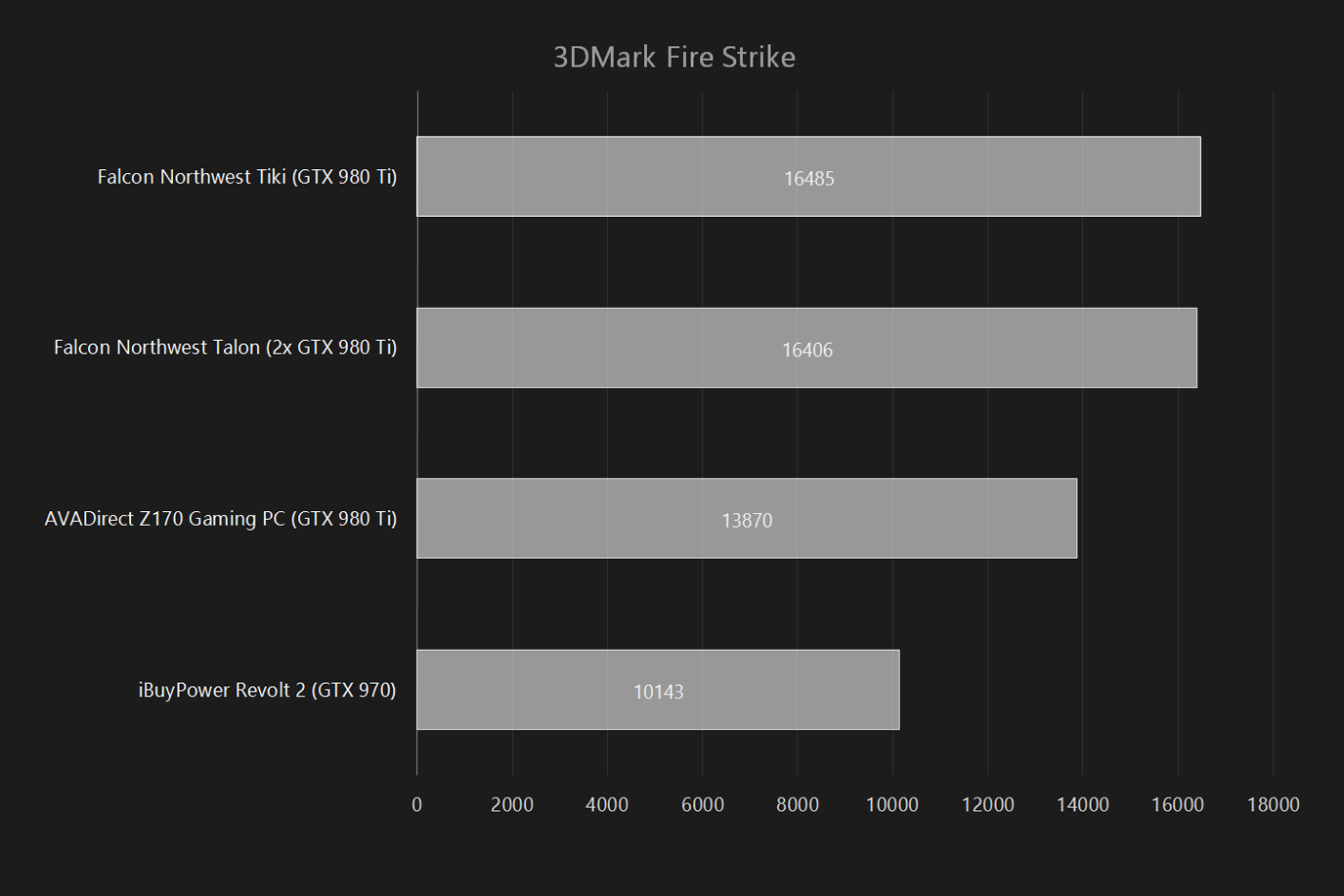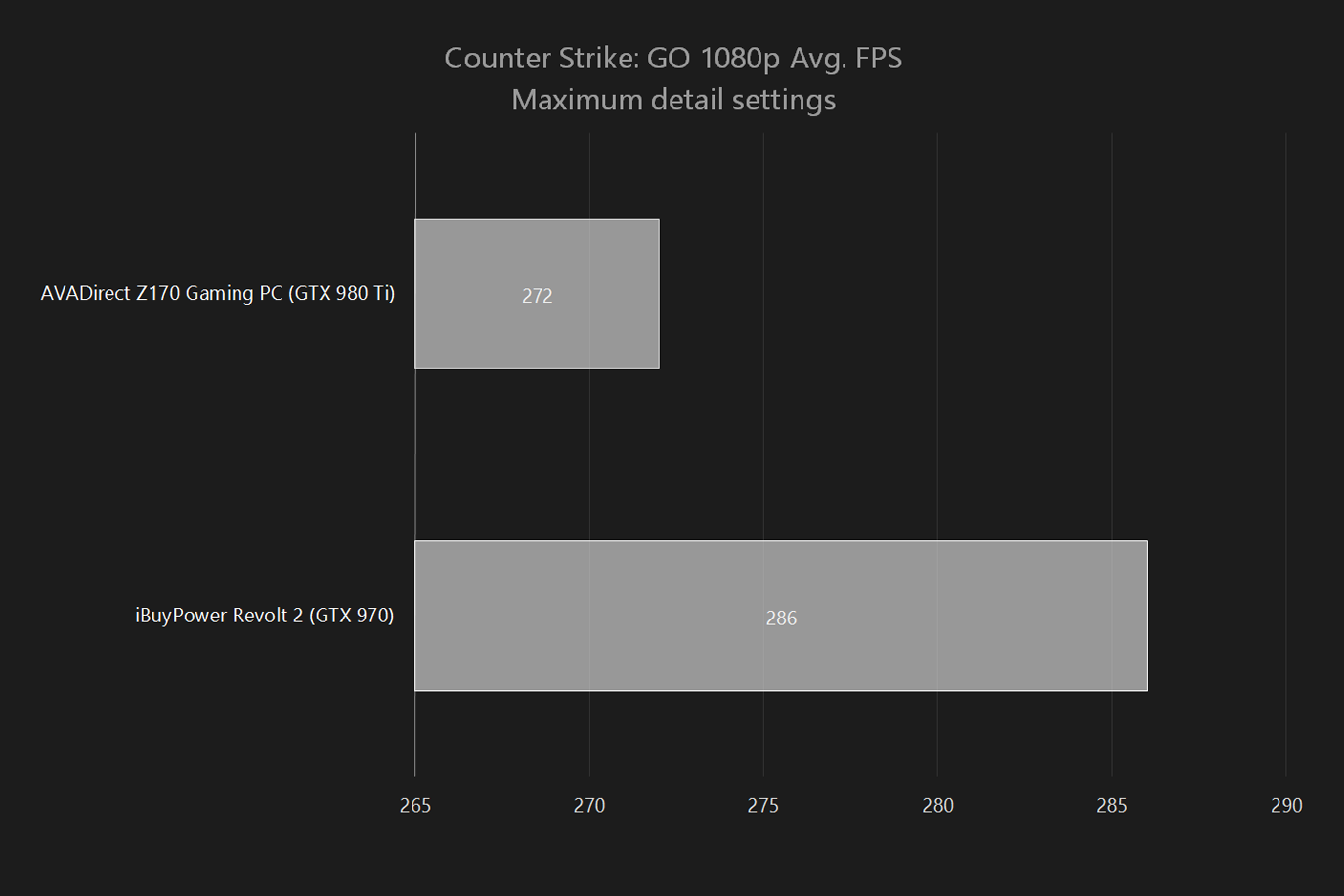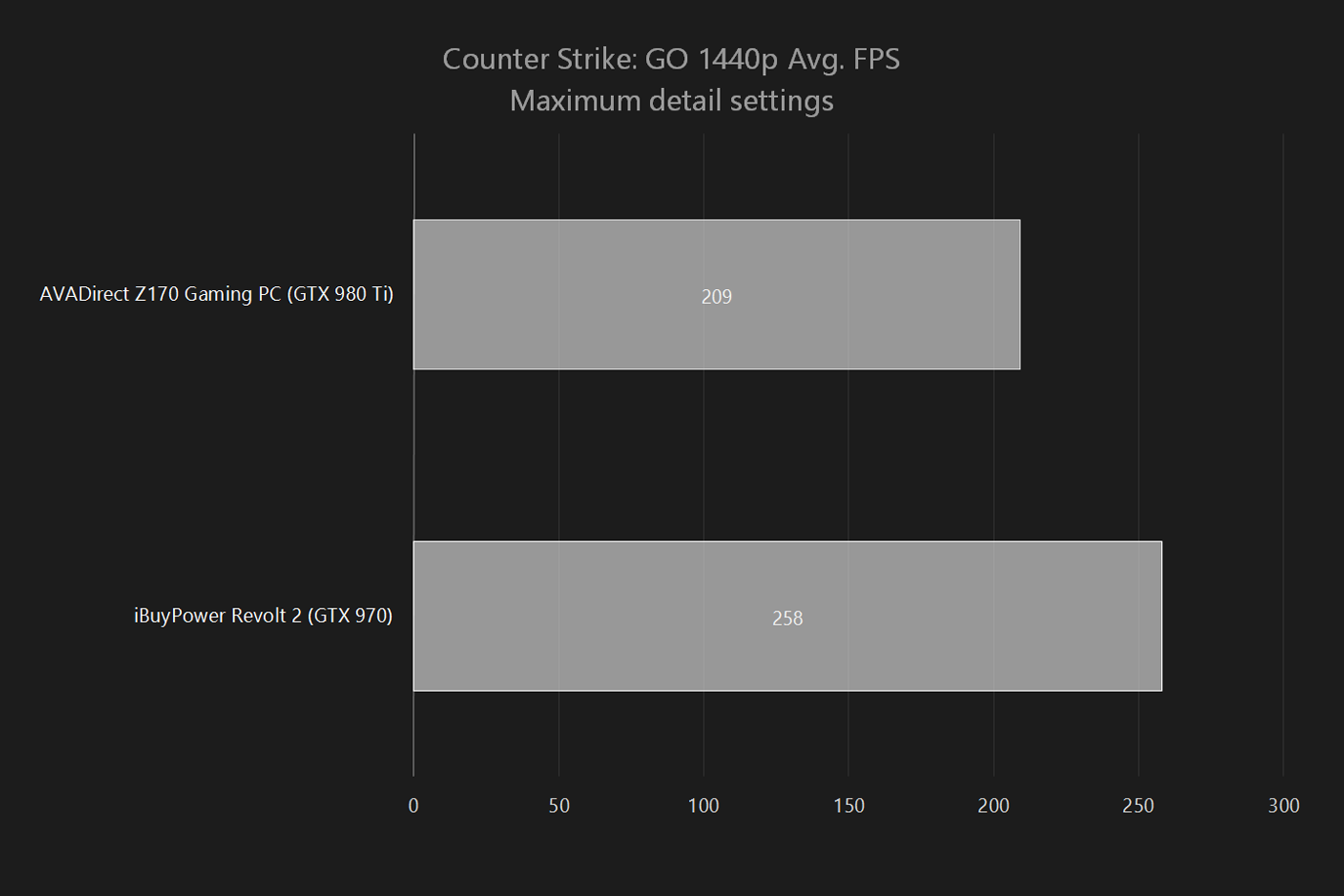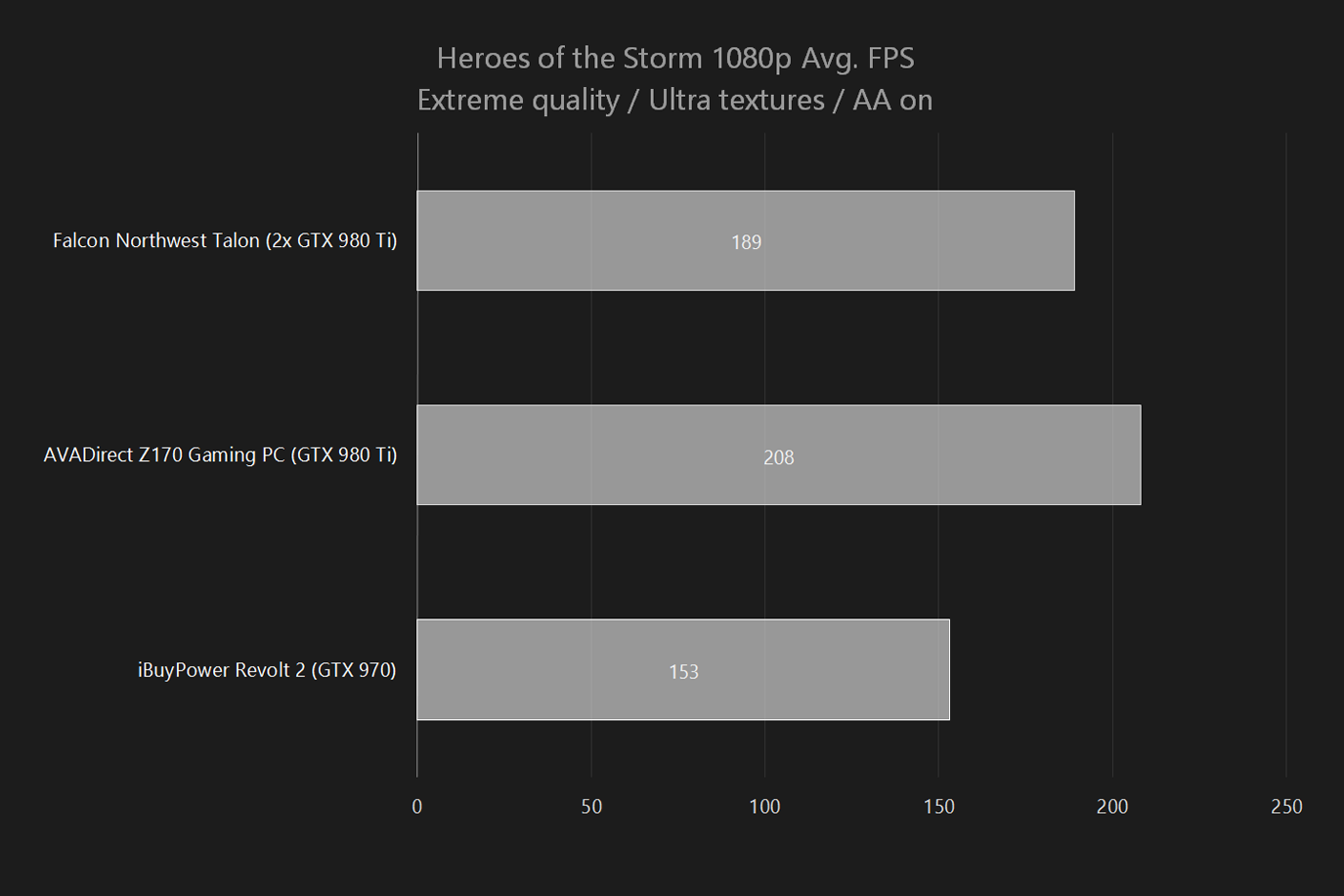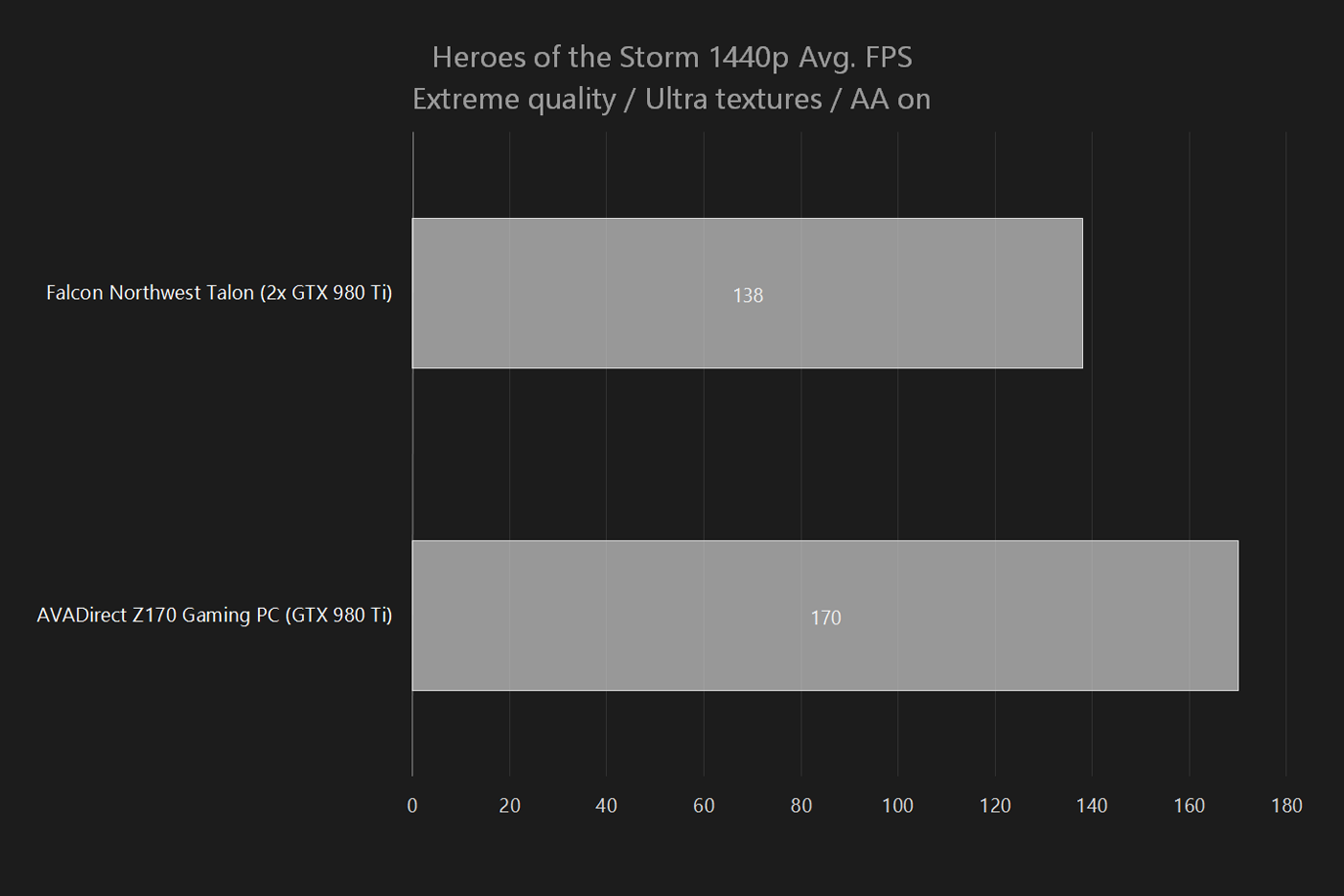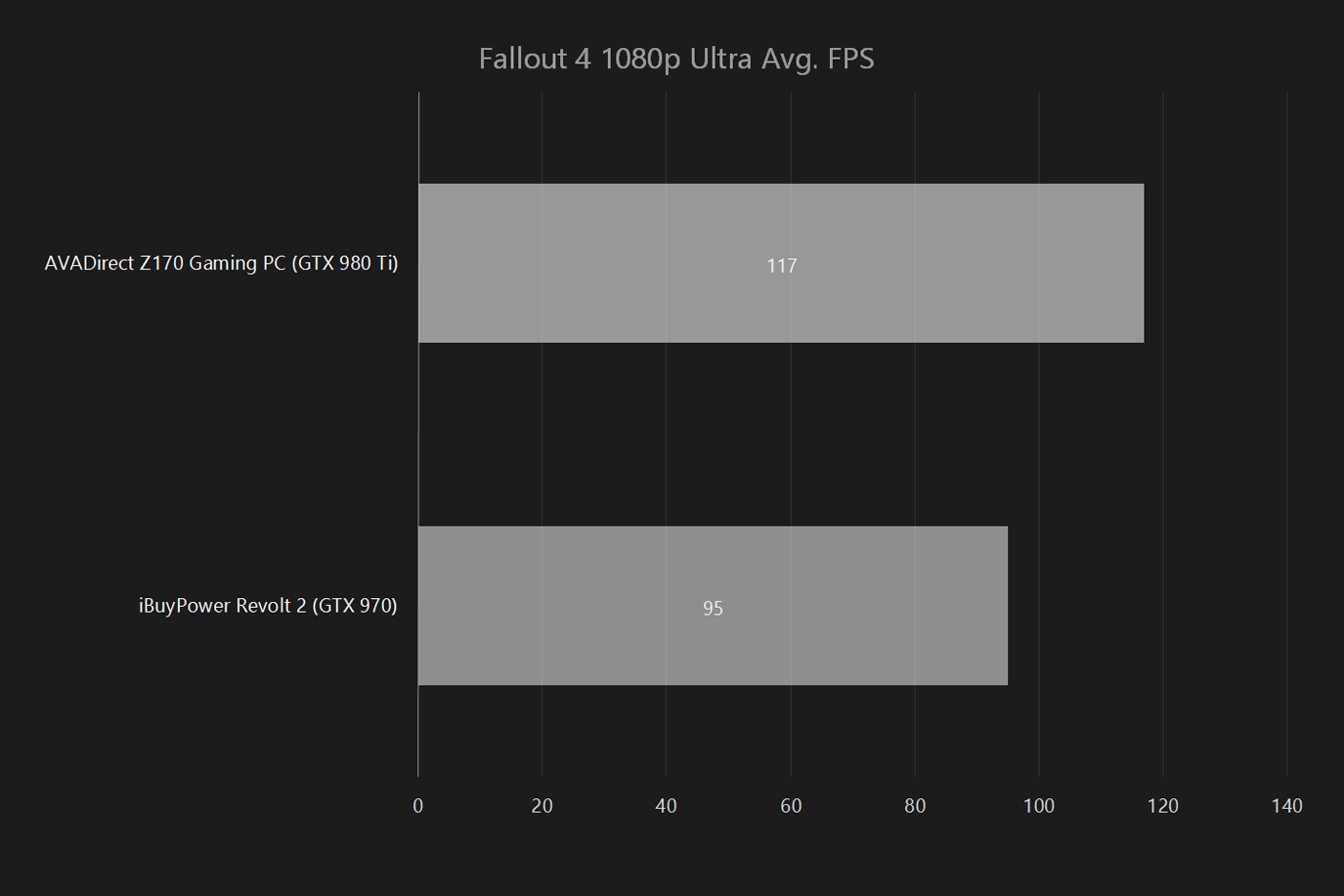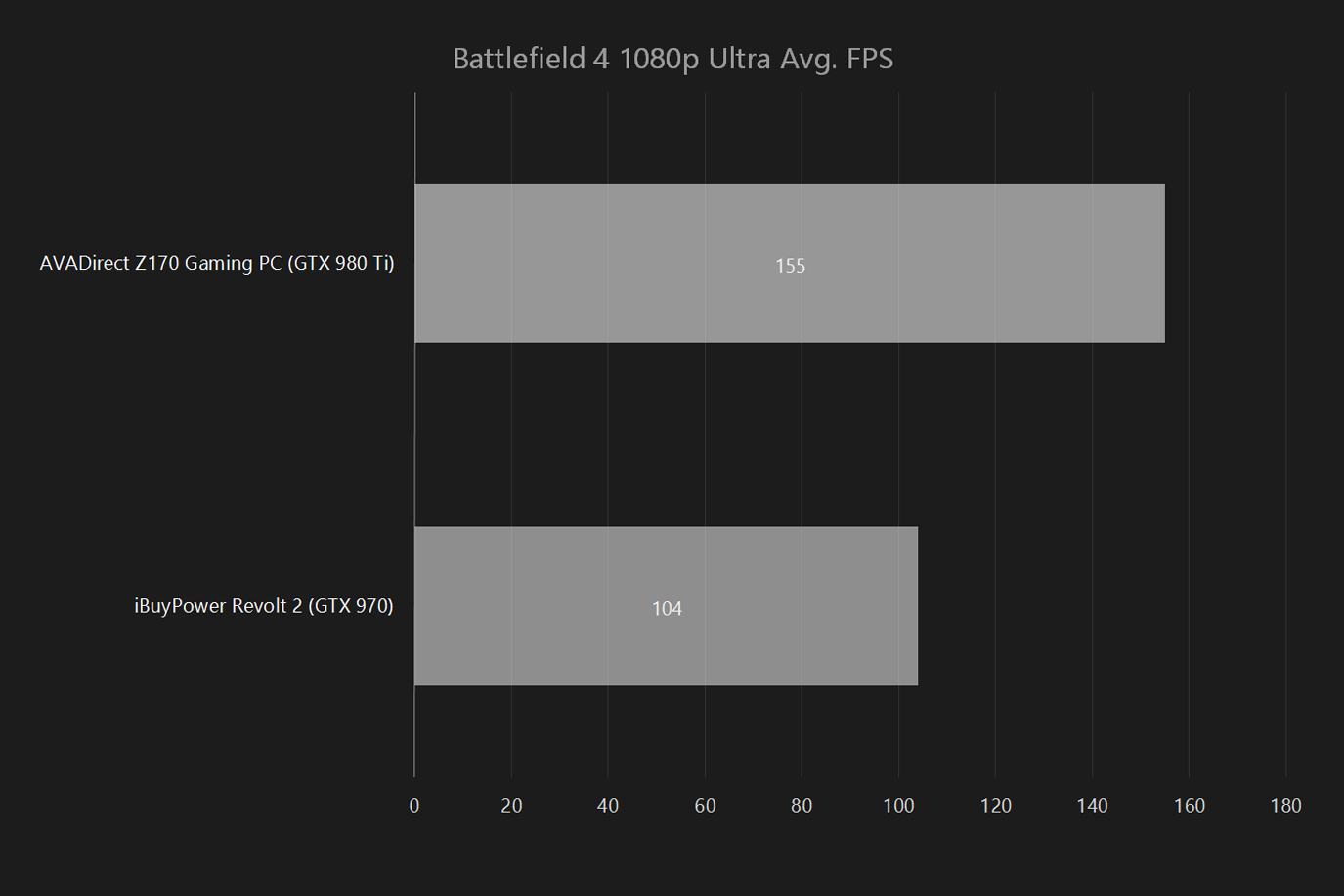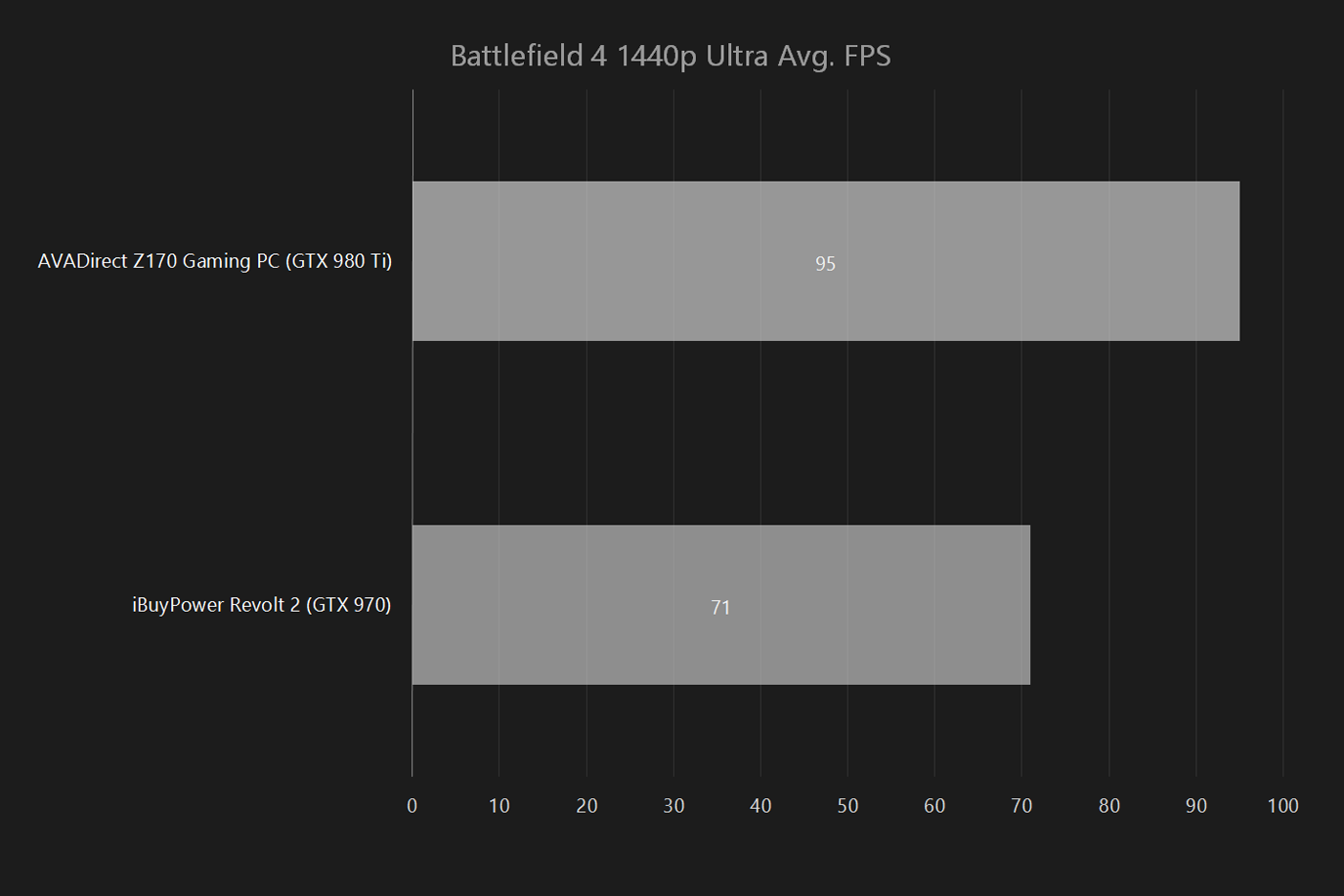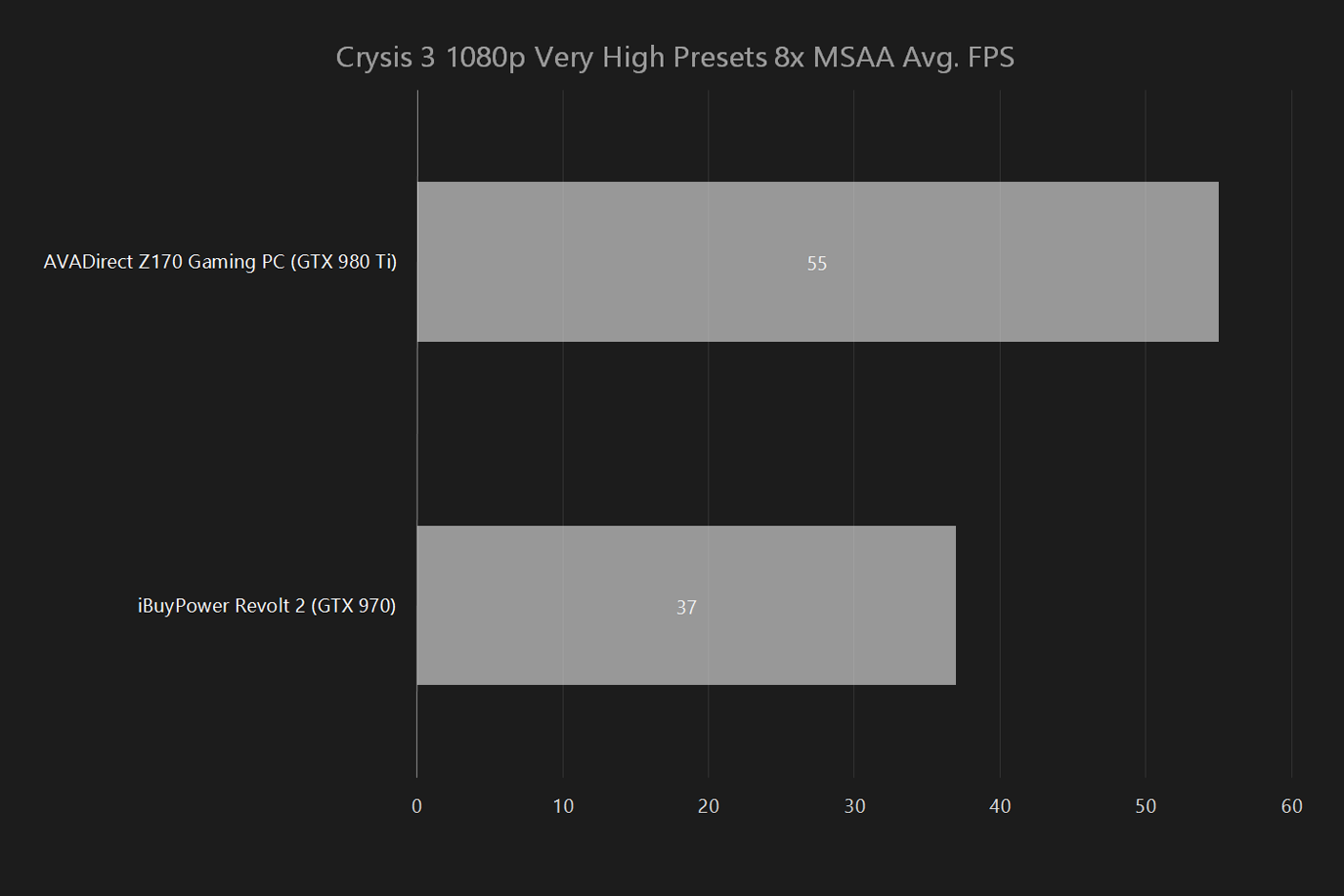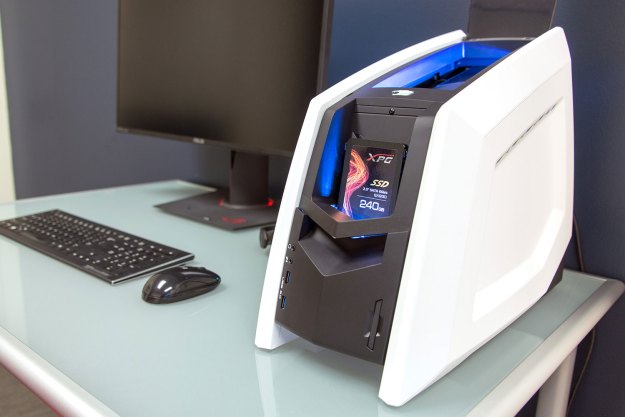
“The Revolt 2 is a unique and capable alternative to boxy budget desktops.”
- Stylish, unique look
- Strong processor
- Can handle 1440p gaming
- Affordably priced
- Very limited upgrade options
- No dual-GPU or PCIe hard drive option
Small form factor desktops have become common, even among enthusiast rigs. So common, in fact, that it’s often difficult to separate each from its peers. Most go for a thin profile – often designed to stand upright — in an effort to bring class and elegance to performance computing. The Falcon Northwest Tiki is a prime example. Those that go for a flashier look, like the Maingear X-Cube, tend to use off-the-shelf enclosures, which limits how the manufacturer can customize the machine.

This results in a system that doesn’t fit neatly in any category. It’s small, yet bigger than most which lay claim to the “small form factor” title. It can be powerful, yet it can only fit a single video card. It’s affordably priced, yet with a starting MSRP of $900, and as tested price of $1,530, it’s not the least expensive around. Does the Revolt 2 slice and dice category assumptions, or is it just an oddball?
Gundam amazing
“The Revolt 2 is anime,” was my first thought when I saw the rig at CES 2016. Its strange, stubby enclosure, with aggressively raked top panel and chunky, vented sides, looks like nothing so much as a Gundam’s shoulder. Or head. Or maybe, foot.
While unusual, the enclosure has purpose. The entire machine is a trophy case for the video card, which can be spied through a transparent hood. LED lights along either side of the interior place a spotlight on the card, and do quite a good job of it, as the individual lights are invisible from most angles. A bundled software tools lets users choose from 256 color options and various lighting patterns.
Just like a car’s hood, the window protecting the GPU can be swung back, though the card can’t be removed through the top. The solid state drive slot at the front of the case, also visible through the window, is more functional. It can be removed without tools, though it doesn’t support hot-swapping.
At eighteen inches deep and fifteen inches high, the Revolt 2 is large for a desktop with a mini-ITX motherboard, and its shape doesn’t fit better on or under a desk than a regular mid-tower. IBuyPower obviously wants the system to be the pride and joy of each owner’s set-up. While opinions on the rig’s attractiveness varied at the Digital Trends office, everyone agreed it’s an attention getter. That’s notable, given the price. The fit and finish of the Revolt 2 is on par with competitors that cost thousands more, despite the base model’s affordable $900 MSRP.
Upgrades not possible
Opening up the Revolt 2 reveals an unconventional interior. The video card’s prominent position is made possible by placing the Mini-ITX motherboard near the top of the case and rotating it to follow the sharp rake of the enclosure’s profile. Despite that, there’s no room underneath for the power supply, so it is placed side-by-side with the motherboard. Fan mounts are found only at the bottom, and the only 3.5-inch hard drive mount is at the front.
These decisions mean the rig is tough to upgrade. The two hard drives – the SSD under the hood, and 3.5-inch mechanical drive inside – are the only components easily removed without first removing other hardware. Accessing the video card is possible, but not easy, because the PCIe slot’s ejector tab is in a tricky position. A screwdriver will likely be needed to access it, and thus remove the card, without first removing the power supply.
[specifications product_id=”910790″ align=”left”]
Ah, the power supply. It obscures the entire motherboard, including the RAM and processor, so replacing either will mean taking the supply out. Luckily, its cords are long enough to let the supply be placed aside without disconnecting every component, but its presence can still get in the way.
Replacing components isn’t as hard as it might sound, because the case, while confusing, has a lot of open space. But that open space results in a complete lack of upgrade options. There’s no room for a second video card, or even an extra hard drive, aside from the two our review unit had from the factory.
That’s a problem. Other enclosures the size of the Revolt 2 usually offer room for two video cards and several hard drives. The Mini-ITX of the Origin Chronos, for example, can equip at least three drives and up to five, depending on configuration. It’s clear that form, not function, is the priority. Digital Strom’s Vanquish Four has no problem fitting multiple cards, though it’s admittedly a bit larger.
Processor performance
Our review unit arrived with a Core i7-6700K processor, which is incredibly common in systems we review, and the enthusiast processor of choice. It is a bit surprising to find it in a PC as inexpensive as the Revolt 2. The processor isn’t overclocked, and is paired with 16GB of DDR4
At first glance this may seem a mediocre result for the iBuyPower, as it doesn’t chalk up a victory in any benchmark. That would ignore the price. At $1,400, it’s almost half the price of the AVADirect Z170 Gaming, and about $2,600 less than the tricked-out Falcon Northwest Talon. This proves you don’t need to spend thousands to snag a great processor.
Hard drive performance
While the Revolt 2’s CPU is unexpectedly strong, its storage betrays the system’s affordability. We received it with a 240GB SATA solid state drive, the Adata SX930, and a 1TB Western Digital Caviar Blue mechanical disk drive. The SATA SSD of course can’t keep up with the latest, great PCI Express models due – it’s literally impossible, due to the SATA connection standard’s limited bandwidth.
There’s really no comparison in terms of speed. A PCIe drive is several times quicker than a SATA drive. The Revolt 2 didn’t have one in the configuration we tested, and in fact can’t equip one, as it doesn’t have a spare PCIe slot, or space for the drive if it did.
Within the context of SATA drives, though, the Revolt 2 didn’t do poorly. It defeated the more expensive AVADirect and achieves a solid overall result. If you’re gaming – and that is what this rig’s built for – the SATA drive won’t hold you back. Hard drive performance can marginally lower load times, but doesn’t impact frame rates.
Game performance
The Revolt 2 is unusual for many reasons, and one is its graphics card – a GTX 970. Okay, the 970 isn’t a weird card. It’s a strong candidate for the best bang-for-your-buck card on the market today, despite RAM issues that caused skepticism after its release. But it isn’t the card companies usually send for review. We usually see a GTX 980 Ti, because if a company doesn’t send rig with that card – and everyone else does – the company will “lose.”
That’s exactly what happens here. The Revolt 2 loses. It isn’t as quick as the AVADirect Z170 Gaming PC, nor the Falcon Northwest Talon. In fact, it’s the slowest gaming desktop we have reviewed in some time.
But remember the price. Equipping the GTX 970 may put iBuyPower’s rig behind in the benchjmarks, but it’s still fine for most games at 1440p resolution, and can handle almost anything at 1080p, with the exception of Crysis 3 with every detail turned on. Less demanding games, like Counter Strike: Go and Heroes of the Storm, run without a hitch. Choosing a more powerful system would be overkill.
And iBuyPower is aware of the gap. It has not only priced the system accordingly, but also talks up the Revolt 2 as an eSports machine rather than a world-beating
Indoor voices
The Revolt 2 doesn’t have many fans, but it’s also a small system with no sound insulation. These traits balance out. At idle, the system emits 42.9 decibels. At full load the noise level increases to 45.3dB.
Most modern games are playable at 1440p and maximum detail.
Both numbers are competitive. The AVADirect Z170 Gaming PC was a quieter at idle, at 41.5dB, but emitted a much higher 48.2db at load. The Falcon Northwest Talon was also tamer at idle, putting out just 40.6dB, but was exactly as loud at load.
Gamers who want silence may be annoyed by the Revolt 2’s constant hum, but most will find it’s easily lost in the background.
Warranty
While iBuyPower has a standard three-year warranty, its terms are weaker than its title suggests. Only labor is covered for three years, and parts are covered for one year. Most competitors offer a free lifetime labor warranty, so iBuyPower is actually behind in this area. Customers must also pay for shipping after the first 30 days.
A fashion-forward desktop everyone can afford
Few desktops have ever tried what the Revolt 2 accomplishes. It’s unique in its pursuit of form over function. In most systems, a lack of upgradability is a design flaw. With the Revolt 2, it’s a feature. The company wanted to design a PC that prioritizes style above all else, and it’s succeeded. That’s sure to make some PC purists unhappy, but this rig is still powerful enough to handle modern games at 1440p.
And iBuyPower isn’t charging users for its style. The base price of $900 is approachable, and our review unit’s $1,530 price tag is a great value. An equivalent Origin Chronos is about $1,700, and a Falcon Northwest Talon with a GTX 970 starts at $2,000. Digital Storm’s Vanquish is a strong alternative, as it costs roughly the same and is far easier to upgrade – but it uses a conventional ATX mid-tower.
The Revolt 2 isn’t for everyone, but some gamers will fall in love with it. It’s unique, portable, and affordable – a trio of traits you won’t find elsewhere.
|
|
iBUYPOWER + Digital Trends Giveaway(1) winner will be selected to receive an iBUYPOWER MEK Mechanical Gaming Keyboard (MSRP $99.99). |
Editors' Recommendations
- Best Buy deals: Save on laptops, TVs, appliances, and more
- Acer’s new Predator Orion X is an RTX 4090 desktop I might actually buy
- The next Mac Pro could quadruple the M2 Max chip’s power
- Apple’s new M2 MacBook Pro can’t handle the heat — should you still buy it?
- M2 MacBook Air vs. M2 MacBook Pro 13: Which should you buy?



